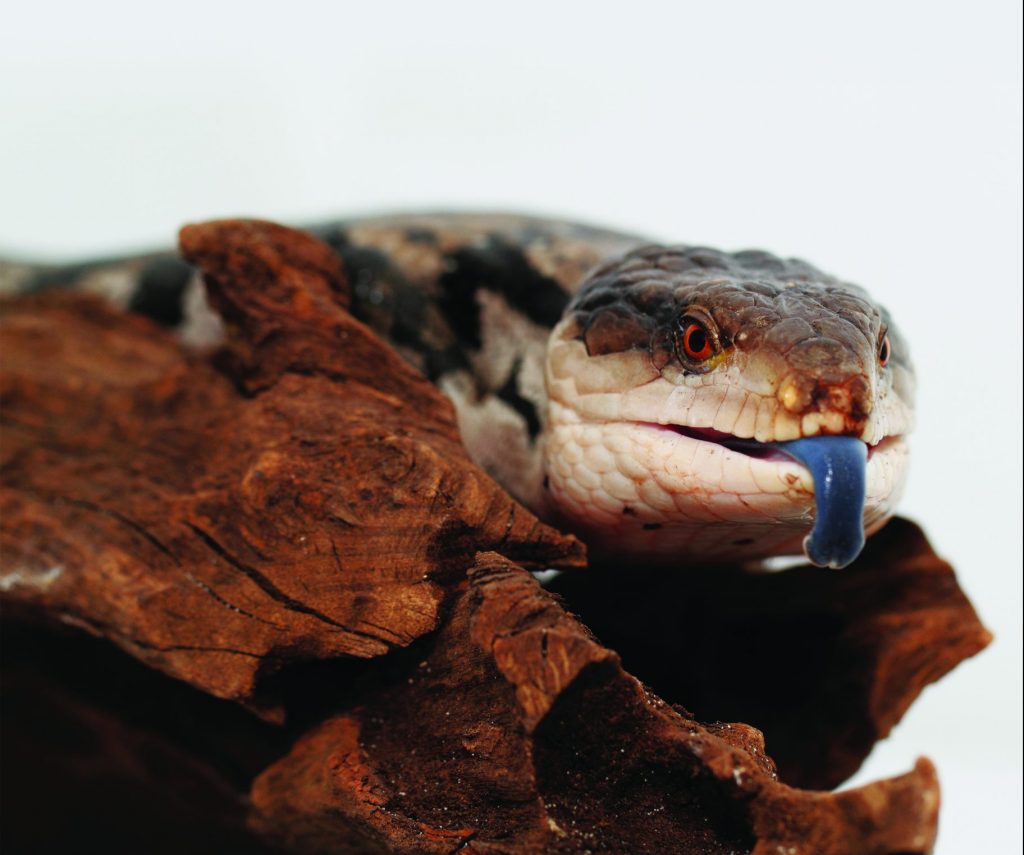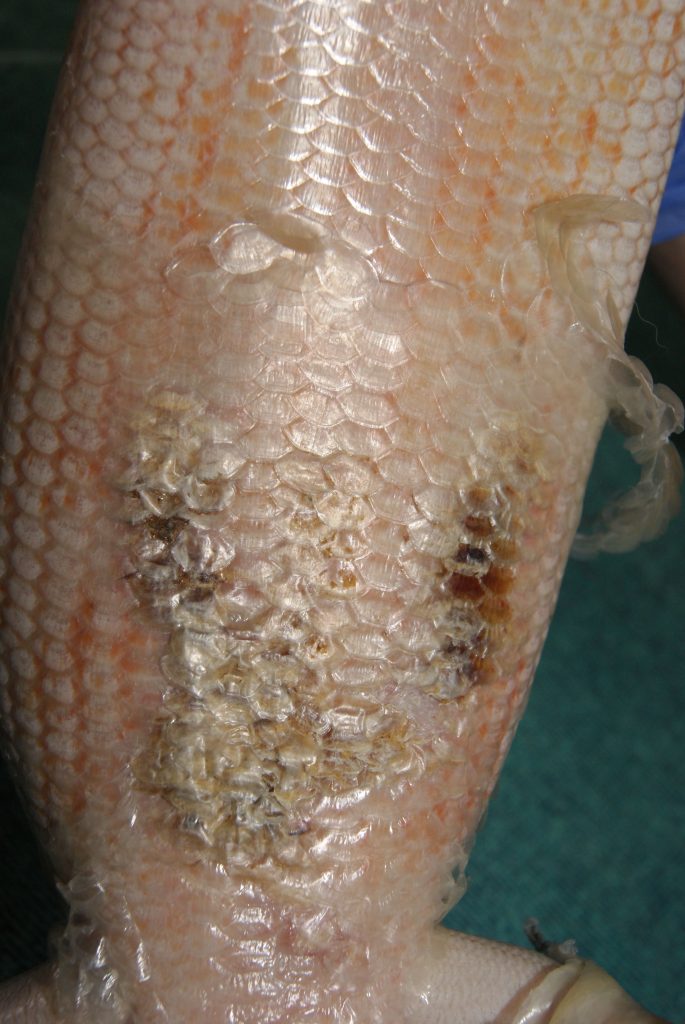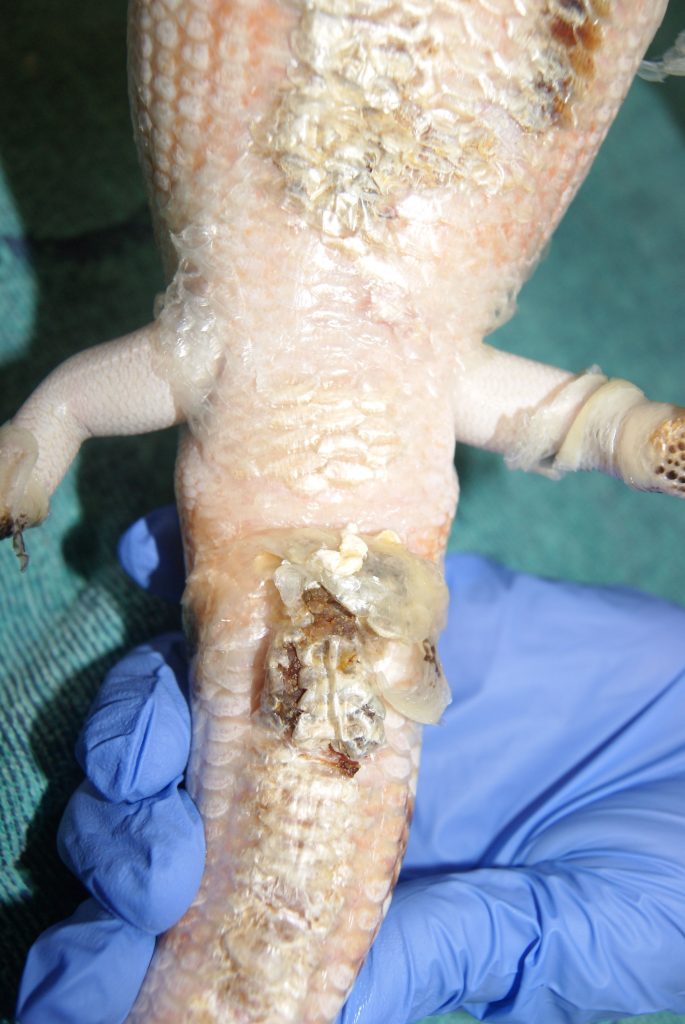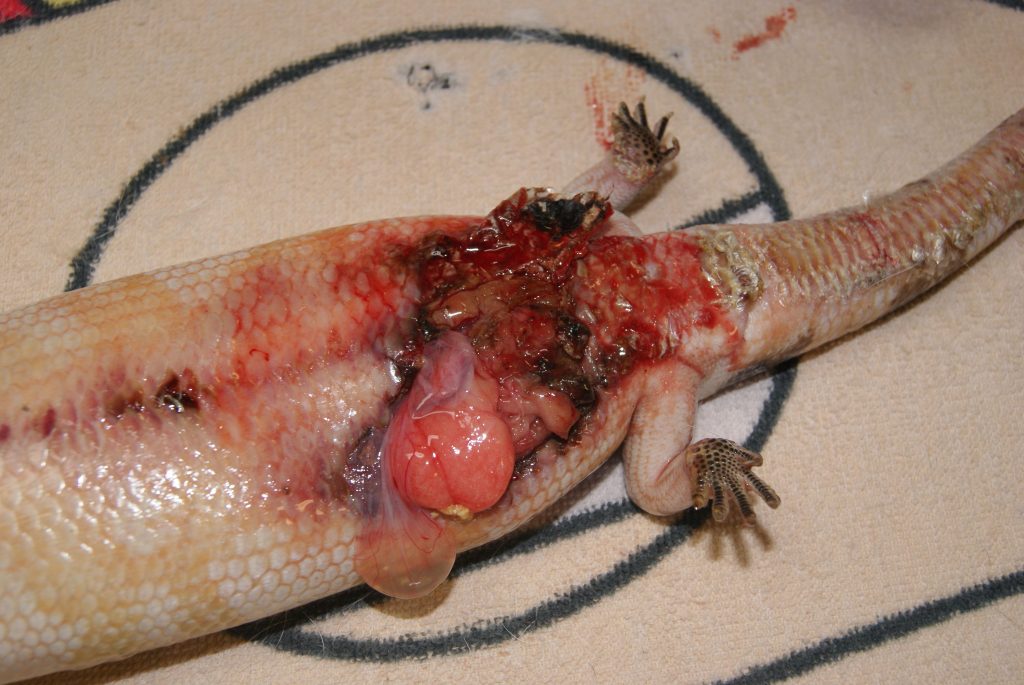Most reptiles do like it hot, but when does hot become too hot? Today’s article looks at thermal burns in reptiles and how to prevent them happening to your pet.

How do reptiles get burned?
Reptiles rely on warmth from other sources to heat their body to its preferred temperature. The preferred temperature that each reptile likes is different for each species and even varies amongst individual animals within that species. The way reptiles warm themselves in the wild is predominantly from either direct warmth from the sun or from sitting on or in something that has been warmed by the sun. In captivity we generally need to provide other sources of heat as often the reptiles that we keep are not local to the area that we live. These heat sources generally include specialised cords, lights, mats, tiles, wall heaters and artificial heat rocks or caves – all of which are safe to use when working well and properly set up with adequate protection. If the heat source malfunctions or is not set up correctly then burns can occur.
What are some of the causes of burns that you see?
Some of the common causes of thermal burns include:
- Not using protective covers over lights
- Allowing the reptile to lie directly on the heat cord or mat without having any barrier (ie a rock or tile) between the heat source and the reptile
- Heat caves malfunctioning
- Not using a thermostat in the cage. Thermostats work by turning off the heat source once a certain temperature is reached and are recommended for all reptile cages with artificial heating.
What do burns look like?
Thermal burns can range in severity from mild scale trauma right through to complete burns that damage internal organs. In most cases it generally takes a few days (sometimes up to a week or so) to show the true extent of the damage. Burns initially often start out having a red appearance to the scales that progresses to a darker black colour in some cases.



How do I prevent my reptile from burning itself?
Having your cage well set up with adequate protection from direct contact with the heat source is the best way to prevent burns from occurring. Using a good thermostat to prevent overheating of the cage is also very important.
How do you treat reptiles with burns?
Most thermal burns can be treated medically with a range of antibiotics, anti-bacterial burn creams, fluid therapy and pain relief. Some cases require surgery and other cases are sometimes unfortunately beyond the point of saving. These cases are particularly devastating for all involved as burns are very preventable.
If you are concerned that your reptile might have a thermal burn or want advice on the best way to set up your cage then contact your local reptile vet.
Article written by Dr James Haberfield of The Unusual Pet Vets

